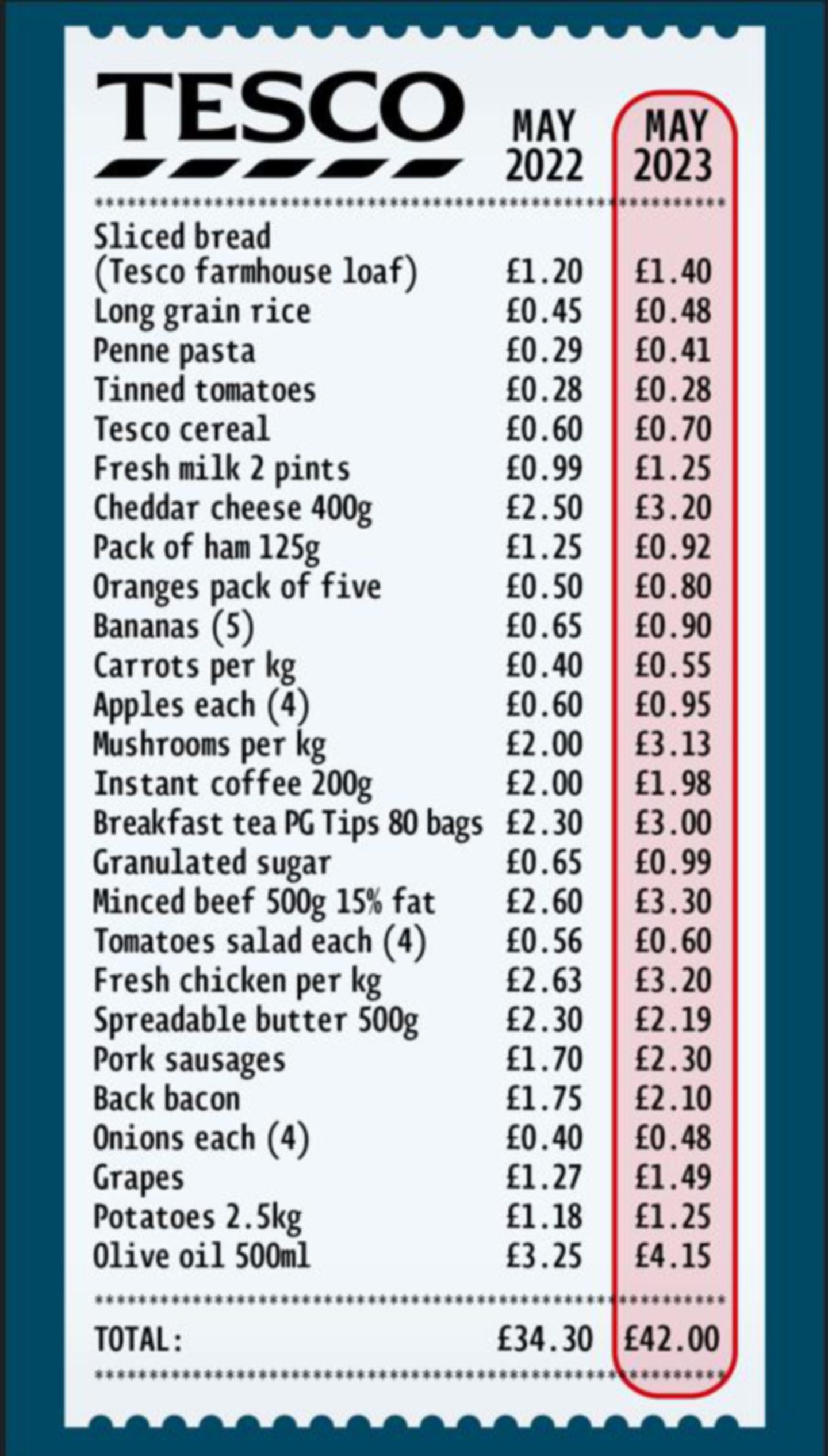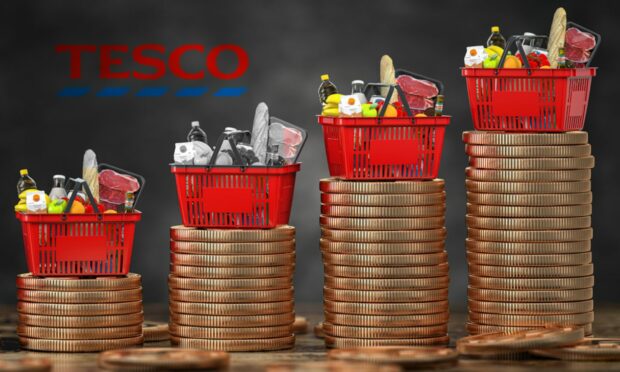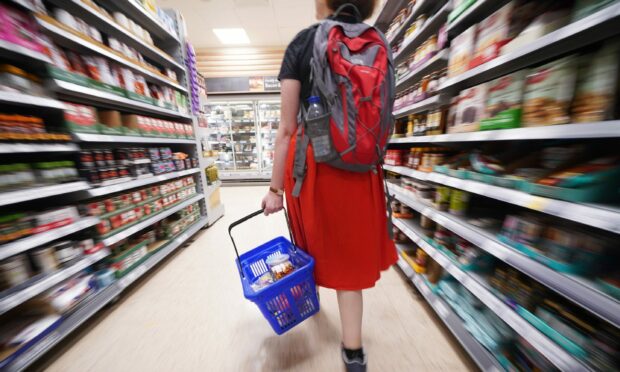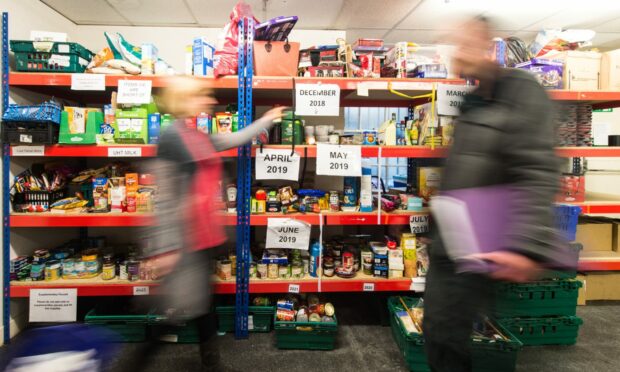Supermarket prices at Tesco have soared by nearly 25% in the last year at more than double the national rate of inflation, figures show.
An investigation by The Press and Journal and The Courier has compared prices at the chain today and in May last year.
And the results show that our virtual sample basket would now cost £42.00, an increase of £7.70, or 22%, from last year.
What food prices are up, and what is down?
Today, and in May last year, we looked at the same food items that would be commonplace in almost anyone’s shopping trolley.
We picked out cereal, bread, milk as well as fruit, vegetables and meat to make meals with.
In each case we took the cheapest item available from the Tesco online grocery shop, so some items may not be exactly like-for-like to ensure we kept our trolley as cheap as possible – an exercise facing many households at the moment.

And what we discovered was that prices have soared during the last year, leaving many households with tough decisions to make.
The largest increases were in some of the household staples with a pack of penne pasta up by 41% to 48p.
Meanwhile, oranges were up by 60%, apples by 58%, mushrooms by 56% and sausages by 35%.
However, many prices have remained reasonably static with potatoes up by only 5%, tinned tomatoes staying exactly the same, and instant coffee actually falling by 1%.
A Tesco spokesman said: “With household budgets under continued pressure, we remain focussed on providing value for our customers.
“Our market leading combination of Aldi Price Match, Low Everyday Prices, and Clubcard prices means we are the most competitive we have ever been.
“So whether it’s price matching Aldi on the basics, locking the price of more than a thousand household staples until July 2023, or offering exclusive deals and rewards through thousands of Clubcard prices – we’re more committed than ever to providing our customers with great value.”
Why are food prices going up, and will they ever come back down?
Today the British Retail Consortium revealed that average food prices increases across the UK had gone up by a record 15.7% in the last year.
The group surveyed 5,000 retailers across the country before finalising its biggest jump since records began in 2005.
Sellers say their margins are being squeezed more than ever due to rising fuel bills hitting distribution costs as well as energy bills to keep stores warm and food cool.
Helen Dickinson, chief executive of the British Retail Consortium (BRC), said: “Overall shop price inflation eased slightly in April due to heavy spring discounting in clothing, footwear, and furniture.
“However, food prices remained elevated given ongoing cost pressures throughout the supply chain.
“The knock-on effect from increased production and packaging costs meant that ready meals became more expensive and coffee prices were also up due to the high cost of coffee beans, as well as key producer nations exporting less.
“Meanwhile, the price of butter and vegetable oils started to come down as retailers passed on cost savings from further up the supply chain.”
Meanwhile, the Russian invasion of Ukraine has affected the supply chain, wages have increased, bad weather has hit harvests with extra Brexit importation regulations.
However, despite all that, the British Retail Consortium says food prices are expected to begin to drop again in the “coming months” as some pressures ease.
Where can you get help buying food in the UK?
The Office of National Statistics says about half of UK residents say they are buying less food to save costs.
The Press and Journal, Evening Express and Original 106 launched their Big Food Appeal last year to shine a light on the struggles facing households while signposting where help is available.
Your local Citizens Advice Scotland branch can provide tips on where the best place is to get assistance for your own situation.
Food banks can also provide emergency assistance, but usually require referrals before they can provide packages.
Food parcels usually contact a minimum of three days’ worth of food for emergency situations and can also include sanitary products and toiletries.


